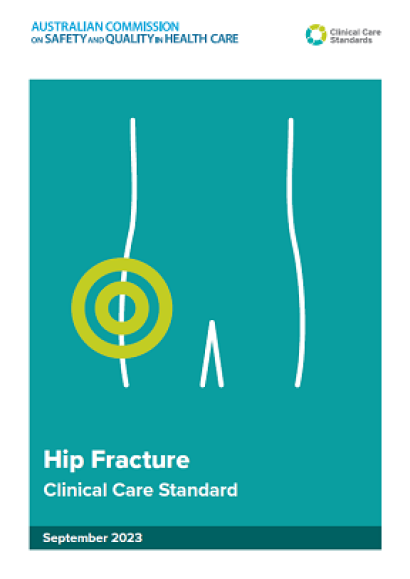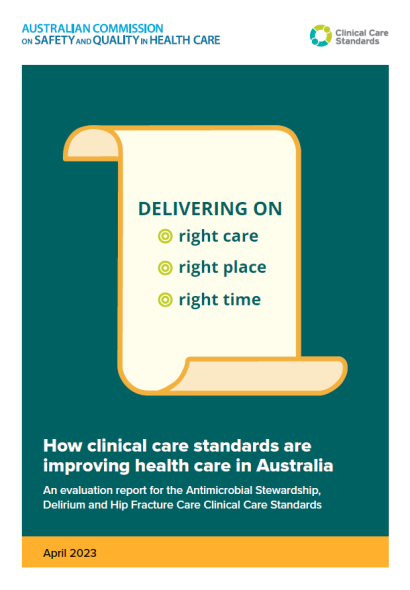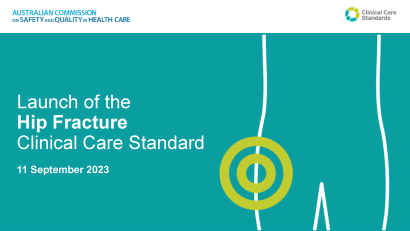Hip Fracture Clinical Care Standard
The Hip Fracture Clinical Care Standard (2023) provides guidance to clinicians and health services on delivering appropriate care for people with a hip fracture.
Download the standard
The updated Hip Fracture Clinical Care Standard was released on 11 September 2023 following a review of current evidence and consultation with clinical experts and key organisations.
Contents of the standard and resources
The Hip Fracture Clinical Care Standard contains:
- Seven quality statements describing safe and appropriate care.
- A set of indicators to support monitoring and quality improvement.
See our targeted information and resources for consumers, clinicians and healthcare services.
Latest news
A study recently published in the Medical Journal of Australia evaluated the impact of adherence to the Hip Fracture Clinical Care Standard on mortality among older patients who underwent hip fracture surgery. This is the first published study demonstrating the positive impact of a Commission clinical care standard on patient outcomes using clinical care standards indicators.
2023 Launch of the revised standard
The updated standard was released at the 2023 ANZHFR Hip Fest conference. Watch the recording of the launch below.
Background and development of the standard
Evaluating the impact of the Hip Fracture Clinical Care Standard
As part of the review, an evaluation of the Hip Fracture Clinical Care Standard was undertaken in 2020. The evaluation found that:
- 98% of respondents reported that the Hip Fracture Clinical Care Standard improved care when implemented by their organisation
- 96% of respondents reported that the Hip Fracture Clinical Care Standard was relevant to their practice.
Read more about how the Hip Fracture Clinical Care Standard is improving care in the evaluation report.
Communication resources
Show your support for the clinical care standard by sharing our resources on your website, social networks or within your health service organisation.
Access our communications kit which includes newsletter copy and social media graphics to help you share and promote the standard.
Contact us
If you have any questions about this Clinical Care Standard please email ccs@safetyandquality.gov.au
For updates on Standards due to be launched and out for consultation, follow us on Twitter or subscribe to our eNewsletters.



